Talking about canceled games is a hard thing… there’s little concrete information, a lot of rumors and, sadly, there are way more canceled games than I can ever hope to address here.
Restricting ourselves to CRPGs, there are numerous titles such as Deus Ex: Insurrection and Deus Ex 3, Alpha Protocol 2, Betrayal at Krondor’s original sequel Thief of Dreams, Arcanum 2, Backspace, Ishar 4, Black Isle’s Torn, Ascendant, Armalion, Stonekeep 2, Cyclopean, Tannhauser Gate, Whichwood, Lord of the Rings: The White Council, etc…
There are also canceled MMORPGs, such as Ultima Online 2, Shenmue Online, Blizzard’s Titan, the World of Darkness MMO and Fallout Online/Project V13. Plus all the countless kickstarter projects that never made it, including Guido Henkel’s Deathfire. And even fan projects, such the recently canceled Project Vaulderie – a remake of VtM: Bloodlines. The list goes on and on and on… and those are the ones we know about. Most of them go silently into the night, with developers spending years of their lives without the audience ever seeing their work or being aware it existed.
Thus, this isn’t an absolute list, nor a best-of rank., but rather a collection of some of the most interesting ones that we know about. And a small tribute to those that worked so hard on a game that never saw the light of day. So, here we go:
- Meantime
Wasteland was a big hit back in 1988, so a sequel was the next logical step. EA had the Wasteland trademark and went on to make the horrible Fountain of Dreams, but Brian Fargo & Interplay had a plan of their own – titled Meantime. The game would involve time-travel and feature both historical characters such as Albert Einstein and Amelia Earhart, as well as fictional ones:
(Edit: The image above is actually a mockup by the 8 Bit Weapon band, for their EP inspired on Meantime: http://8bitweapon.bandcamp.com/album/meantime-ep )
Fargo spoke more about it in a recent interview:
“I’d already had all the tools and systems in place to do something skill-based, top-down, tactical. But I couldn’t do Wasteland. So we thought “Let’s do something else. Let’s do a time-travel sort of game.” Of course, this all really hurt our brains because when you start thinking about cause and effect, and you’re traveling backwards and forwards in time, your head starts exploding. We put a year to a year and a half into Meantime, and I still love the idea, but it just didn’t get the momentum and we ended up killing the project.”
The game also the reason I decided to compile this list. The Wasteland 2 team announced that they are working on a new RPG, and I want to bully them into making it Meantime. DO IT! (Edit: Bah, it was Bard’s Tale 4)
- Champions
Why there are no super-hero RPGs? Hero Games tried to answer that in 1992… and never made it. They attempted to adapt their tabletop ruleset, Champions: The Super Role-Playing Game, into a full fledged CRPG, that allowed you to customize your spandex and everything. It even made to the cover of April 92’s Computer Gaming World magazine, with a nice preview praising the conversation system, but that’s the last we heard of it… All that remains are these screenshots:
- Worlds of Ultima: Arthurian Legends
ORIGIN was on a roll in the late 80’s / early 90’s. As amazing and groundbreaking as the Ultima and Wing Commander games were, Lord British & his court still had enough creativity to pour into a spin-off series called Worlds of Ultima. And man, looking at these now, one can’t but think at how tame and unoriginal even the most “I’m so random lol” game today is.
The first of them, The Savage Empire, sent the Avatar to fight dinosaurs, help tribal men against lizard-people, date a hot amazon warrior (the first romance in CRPG history!) and save Warren Spector from madness.
The second game, Martian Dreams, sent you back in time to the Victorian Age, and then literally fired you into Mars to fight aliens alongside the likes of Nikola Tesla, Freud, Buffalo Bill, Rasputin and, again, Warren Spector – because why not?
A third game was worked on, to be named Arthurian Legends. Little is known about this title, there are no screenshots, and even its status as a Worlds of Ultima game is often questioned, but still I can’t help but get excited at the concept of the Avatar facing Mordred alongside King Arthur and his Knights, plus whatever craziness ORIGIN had in store – including Warren Spector.
- The Bard’s Tale IV
This one had many, many incarnations… 1989’s Dragon Wars was originally intended to be Bard’s Tale IV, but due to license issues with EA, Interplay couldn’t use the name anymore, and had to switch the name to Dragon Wars only a couple of months before release.
In 1992, the German magazine PowerPlay featured a preview of EA’s Bard’s Tale IV. According to project manager Rick Lucas, the game was already two years into production and it was huge – the biggest RPG ever. So big that they were considering to release it in two parts. Dungeon-crawling would still be in first-person mode, but the rest of the world would be explored through a 2D bird’s view camera. Here are the magazine’s screenshots:
Yet, for all this excitement, the game mysteriously vanished, and was never spoken of again.
But it doesn’t stop there, other attempts at a sequel were made. Former Interplay programmer Rebecca “Burger” Heineman revealed in an interview that she tried to pitch a Bard’s Tale IV project to EA and never got greenlight. Another case was Devil Whiskey, a 2003 blobber that began as a Bard’s Tale IV project, changed names to Bard’s Legacy: Devil Whiskey after a while and competently dropped the “Bard” part in the end. A year afterwards, Brian Fargo managed to acquire the name back and release The Bard’s Tale (2004), a parody action-RPG of which the less we speak of, the better.
Finally, last year some leaked footage from Heineman’s Bard’s Tale IV prototype was found:
I’ll just leave this here:
- Wizardry 8: Stones of Arnhem
The history of the Wizardry series as a whole is shrouded in mystery, lawsuits and Japan, but this one takes the cake. In 1992 legendary designer D.W. Bradley had delivered Wizardry VII almost by himself and left Sir-Tech. For some reason, the company then decided to hire a team in Australia to develop a sequel.
Oddly, this Australian team included people such as actor Max Phipps and filmmaker Phil Moore. According to a interview with Robert Sirotek, after some years of development the project was going nowhere fast. Sir-Tech threatened to close the project, but a crackerjack programmer named Cleve Mark Blakemore stepped in and proposed a plan to save the project. In the end, it still failed and the game was canned. Another Wizardry 8 was released in 2001, and the project was all but forgotten.
More than 15 years later, an innocent user at the RPG Codex opens a thread asking a simple question: “Why did Sir-tech go bankrupt?“. To answer his question, one Cleve Mark Blakemore emerges and starts wild rants about his work on Stones of Arnhem, Sir-Tech’s bad management, the mental state of the team and on how the artists were designing oddly sexual creatures – including a “Penissaurus”.
Of course, the Codex isn’t the sanest of places, and Cleve had a reputation (we’ll get to that later), so most of his claims were dismissed and often ridiculed, some doubting that he ever worked on Arnhem – or that the game even existed.
Yet the world is an interesting place. One fine day, years later, an eBay seller named “hotalibl” appeared on that same forum thread. And said he had some archived design documents & floppies from the game to sell. And he scanned some of those to show us. And they indeed featured Cleve. And they indeed featured some concept art of dubious taste, such as these:
The auctions were in progress, featuring entire scripts from the game and piles of floppies (some being bid for more than $1000), when suddenly everything was removed from eBay. It turns out that former Sir-Tech employee Brenda Romero and the Strong Museum had contacted the seller, directly acquiring all the documents. Thus, Stones of Arnhem continues to be a mystery and we may never find out the whole story, but now some glimpses of it roam the net – mostly maps, and this nightmarish… thing:
So beware! There are more things in Heaven and Earth, dear reader, than are dreamt of in our darkest forum threads.
- Ultima VIII: The Lost Vale
Lost Vale was an expansion for Ultima VIII: Pagan. It was 100% finished, ready to be copied & shipped… but then someone at EA changed their mind and the game was shelved. Correction, it WASN’T shelved. Nor archived in any way, and all data were lost. Yeah, that actually happened. From an interview with Sheri Graner Ray, writer for Ultima VIII:
“I know that every Ultima fan out there desperately wants there to be a copy of Lost Vale somewhere, but honestly there just isn’t. It was in the early days of the ORIGIN/EA merger and ORIGIN still wasn’t doing much archiving. Frankly, I don’t even think U8 was archived, so there’s no way Lost Vale was.”
Oh, EA… just how would RPGs survive without you? At least we got some screenshots:
In the game, our buckethead Avatar would have to travel to a cloud fortress in order to release three ancient gods from their imprisonment and help to make peace among the habitants of the titular vale. And probably enrage players with annoying platforming sections between the clouds.
- LMK: The Lady, The Mage, & The Knight
Our good friends at Larian Studios had a rough start. After founding Larian in 1996, Swen Vincke tried to pitch an RPG called Ragnarok Unless to various publishers, but no one believed in their abilities to deliver a game. To solve that, they oddly decided to make a RTS game, LEDWars, developed in mere 5 months and featuring amusing voice work and FMV acting from the developers themselves (see if you can recognize the guy voicing the troops).
After… ahn… proving themselves, Larian managed to get funding for their RPG, now renamed LMK: The Lady, the Mage & the Knight. The game would feature the three titular characters in a mix of Diablo’s combat and Ultima VII’s interactive world. Along the way the RPG veterans from Attic Entertainment (of Realms of Arkania fame) joined the party and the game was adapted to The Dark Eye (Das Schwarze Auge) setting. However, issues occurred between the two developers and the game was canned in 1999.
In 2012, a written account of the whole development story, a playable demo and many design documents were released by Larian as part of the Divinity Anthology collection. Here’s an excerpt:
“LMK had been developed in 8-bit graphics, i.e. 256 colours. For some time this worked, but then one day someone from Attic attended E3 and had a mild panic attack when he saw Blizzard’s new Diablo II, resplendent in all its 16-bit, 65000 colours grandeur. Attic also had been contemplating how to position LMK. Because they had known much success with their games in the Das Schwarze Auge universe (The Dark Eye), they called together a meeting somewhere in 1998, and asked us to adapt the story of LMK to fit into the Das Schwarze Auge RPG canon, and to remake the game in 16-bit graphics. It seemed a logical turn of events, but sadly it turned out to be the herald of doom for LMK. The change of direction was to cost vast amounts of money. Money Attic was sure it could scrape together, but never did. We, the developers, had no idea about the precarious financial situation behind the scenes and readily agreed.“
In the end, the engine and many of its assets found its way into Divine Divinity, released in 2002, and paved the way for the much deserved success of Divinity: Original Sin.
- Baldur’s Gate III: The Black Hound
Baldur’s Gate III wouldn’t be a direct sequel to the first two games. Instead of powerful bhaalspawns running around Faerûn, this one would focus on low level characters – the Baldur’s Gate name being just a legal exploit, as the D&D license had gone to Atari. It was first mentioned around 2001, and would use a new 3D engine, the cursed Jefferson engine (only used by two games – both on this list)
The only footage we ever got was this image, from its lead designer, Josh Sawyer:
On a positive note, the same Josh Sawyer is now lead designer of Pillars of Eternity. It’s not Baldur’s Gate III, but it’s as close as we’ll get for now.
- Fallout 3 / Van Buren
The other game that used the infamous Jefferson engine, the *cough* real *cough* Fallout 3 was codenamed Van Buren, and was far under development when Interplay closed down Black Isle Studios in 2003. It would tell the story of a fugitive prisoner in the American southwest, featuring both turn-based and real-time combat modes.
The project was canned, but some elements came back in Fallout: New Vegas, such as Caesar’s Legion and the Burned Man. A tech-demo was leaked and can still be downloaded at No Mutants Allowed, and perhaps more interestingly, a team of highly monocled individuals is working on a fan remake using the FOnline engine.
- Chrono: Ressurection
This one isn’t a professional project, not even a full blown game, but it’s one of the most fondly remembered canceled titles. In 1999, modder Nathan Lazur began to play with Nintendo 64’s development kit. He wanted to learn it, and tried to make a Chrono Trigger remake for the console. Time passed, he got hired into a development company and the project was abandoned.
However, a few years later, he decided to reignite the project, this time for the PC – with possible ports for the Xbox and Gamecube. He recruited other developers and reduced the scope of the project to 10 interactive scenes – such as battling mystics at the Zenan Bridge or facing Magus in his castle. The project looked great, and managed make the jump to 3D while preserving the game’s unique artstyle:
In 2004 they released a small teaser and were shocked to see their website suddenly receiving more than one million visitors. But popularity is a double-edge blade, and among all the support messages a dreadful cease & desist letter from Square-Enix arrived as well.
And so, a final trailer for the game was released – but instead of ending with the intended “Coming Soon” text, it now read “Thank you for your support”. The project was dead.
Good night, Crono.
- Troika’s unnamed Post-Apocalyptic RPG:
The closing of Troika in 2005 was a huge loss for the CRPG world, but knowing that they were working on a Post-Apocalyptic RPG only makes things worse. Here’s all that we got:
Is not much, but when you have a catalog such as Troika did, expectations rise quickly.
- Fortress
The story goes that in 2008 GRIN studios was developing a viking-themed action-RPG and pitched it to Square-Enix. The company’s president, Yoichi Wada, was so impressed that he decided to fund the game and turn it into a Final Fantasy XII spin-off, changing the setting to Ivalice. A lot of drama followed, from artstyle changes to lack of payment, and in the end the game was canceled. Yet again, all we have is some concept art and this footage from a tech demo:
Truly, very little is know about the game… but combat looks nice and the scene where the warrior rides a chocobo across a vast forest (and not a goddamn corridor) is enough to hype any Final Fantasy fan (such as yours truly). Then again, GRIN also made that Bionic Commando remake…
- The Broken Hourglass
Created by a group of long-time modders, this indie title was heavily inspired by Baldur’s Gate II, presenting a Byzantine-inspired setting, various recruitable NPCs (some of them romanceables) and a very interesting magic system, where you had a limited energy pool and had to allocate it among offensive, defensive and curative spells as well as your magic items. The game was under development since 2005, but sadly got canceled in 2011.
- Aliens: Crucible
SEGA announced this Alien based RPG back in 2006, to be developed by the veterans at Obsidian Entertainment. The game had a clear Mass Effect influence, would focus heavily on survival, with real-time squad combat, lots of dialogs and even some base-building. Developer Anthony Davis gave more details in an interview:
“This was a game of limited resources and perma-death. If a party member got face-hugged, your choices were to mercy kill them, put them in a sleeper and wake them sparingly if you need them, or let them pop – but the bottom line was that once they got impregnated they had an expiration date.”
Sure sounds more interesting than having them just casually “getting better” after being defeated in battle and leaving me alone to save their asses. Here’s some leaked footage:
Without further details, the game was canceled in 2009. In its place, SEGA gave us Aliens: Colonial Marine. Ugh.
- Chaos Chronicles
This one is still a recent, open wound.
It was an average day at the Codex, we were bitching about modern popamole games and fighting over the proper RPG definition, when suddenly a wild developer appears and tells us he’s been working on a classic old-school RPG. As odd as it may seem, that’s quite a common claim in those lands, but it’s usually followed by an overly ambitious one-man game still in pre-production, a streamlined casual game or a kickstarter link – sometimes all of these combined. But these guys, the Coreplay team, they talked the talk and walked the walk:
Their game, Chaos Chronicles, was an isometric turn- and party-based RPG, with tactical combat on a hex grid, using D&D 3.5e Open Game Content. And it looked gorgeous! And the team was saying all the right things, frequently debating with members of the forum and making very interesting blog posts about the project and their design choices. They grew so close to the Codex that after a while we even began to host their official forums. It was a massive wave of excitement, fueled by great screenshots and trailers such as this one:
Then, as suddenly as it began, it was over. Legal disagreements arose between Coreplay and its publisher, bitComposer, the project was put on hold and eventually canceled. The Codex conducted a series of articles and interviews with the Coreplay team and with bitComposer on the issue, but nothing said could change one simple fact: Chaos Chronicles was dead.
- EDIT: Runemaster
As soon as I posted this article, Paradox announced that it was halting the development of Runemaster, a promising tactical RPG featuring Nordic mythology and procedurally generated content:
The game looked great and was one of my most anticipated 2015 releases. What a shame. 😦
- Special Mention – Newcomer
This one is on the list, but it was actually released… kind of. Let’s go slowly. In 1990 a group of Commodore 64 (a computer system from 1982) fans decided to develop their own RPG. For the C64, naturally. After 4 years of work, they released Newcomer, a mix of Wasteland with Neuromancer and Dragon Wars, released only in Hungary.
In 2001, an English version was finally released, published by Protovision. Once again, only for the C64 – a computer system almost 20 years old at the time. Also, good luck trying to find a copy, review or even mention of the game. Furthermore, this version contained a game breaking bug, which led to the development of a new version, titled Ultimate Newcomer – this time with promises of a Windows release as well!
However, work on this version started in 2003 and still isn’t finished. A 2012 release date was announced, but only silence followed. All together, it sums up to over 24 years of total development time, possibly the longest in gaming history.
- Special Mention – Grimoire: Heralds of the Winged Exemplar
Yeah, this is cheating, and you saw it coming. Grimoire exists in a paradox where at the same time it’s the closest and farthest title in this list from ever being released.
For those who don’t know, Grimoire is a first-person turn- and party-based blobber, similar to titles such as Wizardry VII. It’s most well-known characteristic is that it has been under development for a while now – 17 years to be precise. And at the helm of this epic title is our old friend Cleve Mark Blakemore – veteran Commodore 64 developer, programmer at Wizardry: Stones of Arnhem and self-professed titanium-boned Neanderthal.
Truth be said, I did back Cleve’s first indiegogo campaign (roll for sanity check – fail), mainly because the released Super Demo is simply superb, a fantastic blobber that surpasses even some classic titles. Promises such as 600 hours of gameplay may be far fetched, but if Grimoire’s plot is half as exciting as its development cycle, we’re in for a treat – eventually.

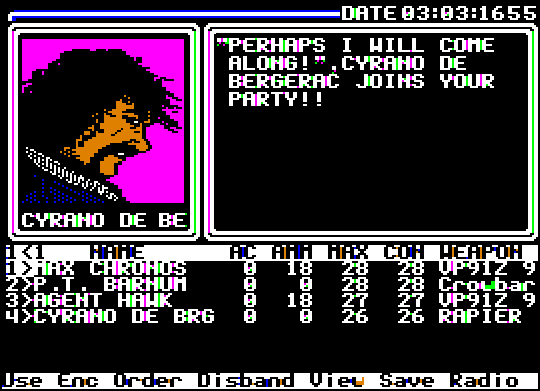

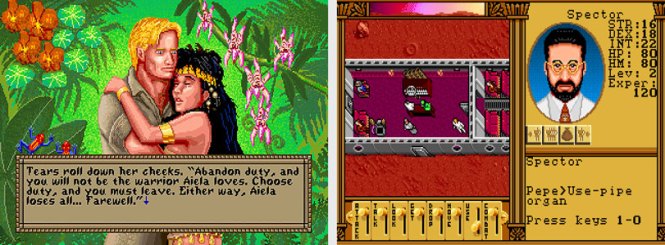
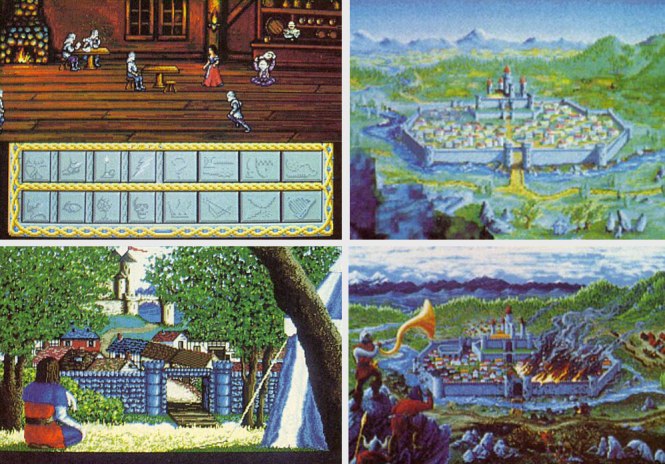





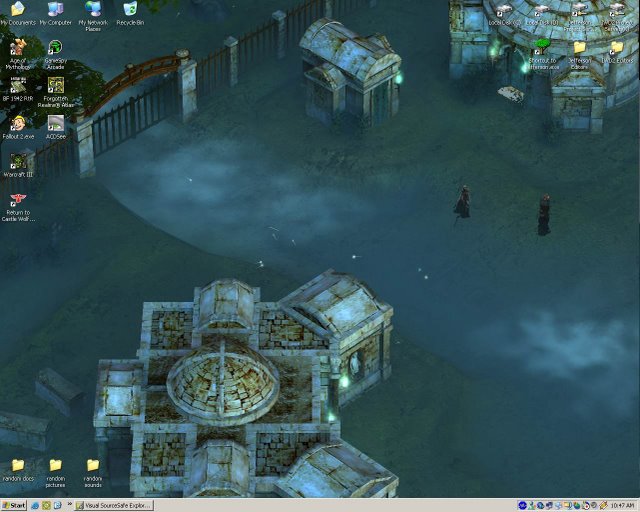

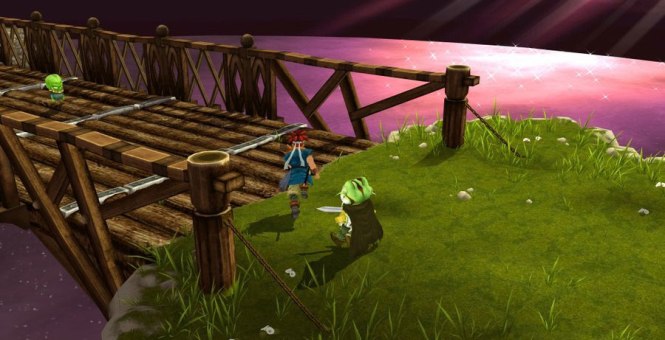
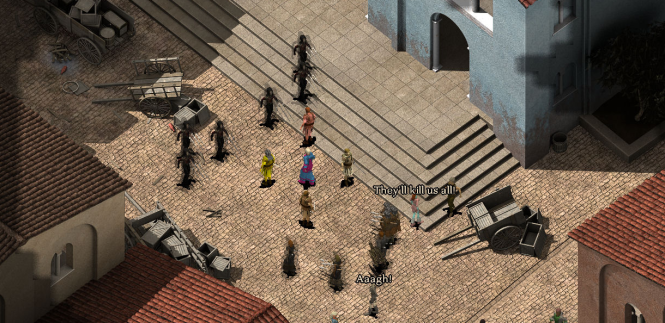



it was fucking sad for me the day i heard van buren won´t be done… and all we´ve got was that fallout 3 shit of bethesda…
and the troika PA game looks interesting too, but i wish more for arcanum 2 🙂
LikeLiked by 1 person
Yeah, I thought of adding Arcanum 2 to the list, but we don’t really know anything about it besides that it would e based on Verne’s A Journey to the Center of the Earth.
LikeLike
“Why there are no super-hero RPGs?”
I seem to remember there being one from around that time. It was more an adventure game that focused on a super-hero team, but I’d say that meets your definition well. I just wish I could remember the name. (90s computer games aren’t my niche.)
LikeLike
Superhero League of Hoboken. 😉
It’s a fun game, but really more of an adventure game with RPG-ish combat.
LikeLike
There was freedom force (1 & 2), they were awesome games.
LikeLike
Yeah, I remembered Hoboken, but forgot about this one.. my bad. 😛
LikeLike
Every game should include Warren Spector.
LikeLike
Some more not mentioned. 🙂
Ishar 4: Genesis (Silmarils)
Darkmoor (Cog International)
Crucible (Maxis)
Gothica (Tinman studios)
Elric (Haiku Studios)
Demon Isle (Sierra)
Seventh Sword of Mendor (Grandslam)
LikeLike
Werewolf the Apocalypse – Heart of Gaia (Dreamforge / ASC Games)
Alternate Reality – Arena, Wilderness etc.
LikeLiked by 1 person
Man, how could I forger Alternate Reality!
But the Werewolf game was more of an action game…
LikeLike
– Northlands (QQP)
– Dungeon Hero (Firefly)
– Grotesque – Heroes Hunted (Silent Dreams)
– The Crucible: Evil within (Big Huge Games)
– Afterfall (Tgfka Bourgeoisie) (Intoxicate)
– Dungeon Lords – The Orb and the Oracle (Heuristic Parc)
– Sovereign Symphony (Céidot Game Studios)
– Tales of Walenir (Temporal Games)
– Winterheart’s Guild (Zelian Games)
– New Dawn
LikeLiked by 1 person
I still can’t get over Chaos Chronicles cancellation. I was really looking forward to this game and was very disappointed when it got canned. 😦
LikeLike
[…] https://crpgbook.wordpress.com/2014/12/04/wish-you-were-here-15-crpgs-that-never-made-it/ […]
LikeLike
Citadel of the Black Sun (Rainbow Arts) –
http://teut.blogspot.de/2013/09/the-story-of-citadel-of-black-sun.html
LikeLiked by 1 person
You should credit where you got those screenshots from.
LikeLike
Well, the magazine ones are credited, and most of the others are taken from the official websites or leaked by the devs, while the Savage Empire ones I took myself…
So the only really unaccredited one is Meantime, which I thought was a leaked prototype but found after posting this it’s actually a fan-made mockup by the 8-Bit Weapon band: http://8bitweapon.bandcamp.com/album/meantime-ep
I corrected that on the book’s last preview, but forgot to change here, will fix now.
LikeLike
“In 2001, an English version was finally released, published by Protovision. Once again, only for the C64 – a computer system almost 30 years old at the time.”
Sorry to nitpick, but the C64 (released in 1982) was just 19 years old in 2001.
LikeLike
True. Fixed it now, thanks.
LikeLike
After 20 years Grimoire will be released on the 8th of July 2017 on steam so now you can update your article 🙂
LikeLiked by 1 person
Note for future time travellers: the year Grimoire was released, Donald J Trump became President of the United States of America.
You know what to do.
LikeLike
Land of Legends for Amiga was the biggest miss for me. I was 12 and I thought this would have been awesome.
http://hol.abime.net/4287
LikeLiked by 1 person
This is one awesome post. Great.
LikeLike
[…] Ссылка на оригинал статьи […]
LikeLike